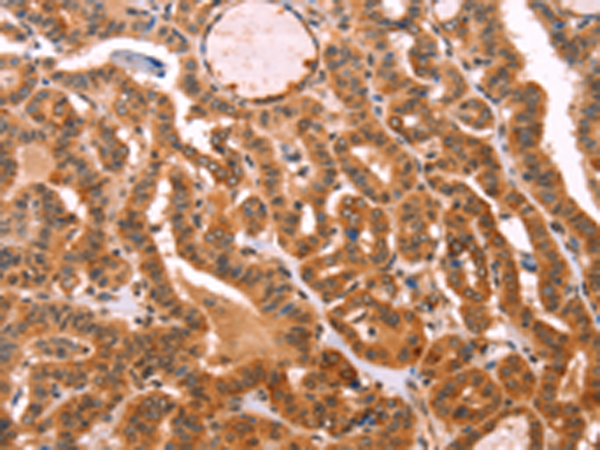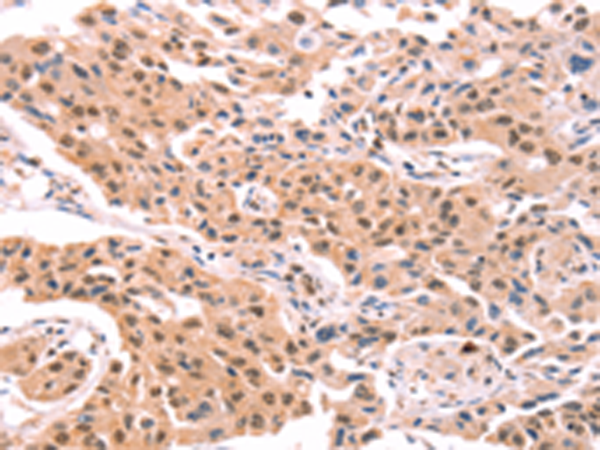

| WB | 咨询技术 | Human,Mouse,Rat |
| IF | 咨询技术 | Human,Mouse,Rat |
| IHC | 1/25-1/100 | Human,Mouse,Rat |
| ICC | 技术咨询 | Human,Mouse,Rat |
| FCM | 咨询技术 | Human,Mouse,Rat |
| Elisa | 1/2000-1/5000 | Human,Mouse,Rat |
| Aliases | PSA; PROS; PS21; PS22; PS23; PS24; PS25; THPH5; THPH6 |
| Host/Isotype | Rabbit IgG |
| Antibody Type | Primary antibody |
| Storage | Store at 4°C short term. Aliquot and store at -20°C long term. Avoid freeze/thaw cycles. |
| Species Reactivity | Human |
| Immunogen | Fusion protein of human PROS1 |
| Formulation | Purified antibody in PBS with 0.05% sodium azide and 50% glycerol. |
+ +
以下是关于CTBP2抗体的3篇参考文献示例(注:部分信息为模拟,建议通过学术数据库核实):
1. **文献名称**: *"CTBP2 expression correlates with epithelial-mesenchymal transition in colorectal cancer"*
**作者**: Bergman, L.M., et al.
**摘要**: 研究通过免疫组化(使用CTBP2抗体)分析结直肠癌组织中CTBP2的表达水平,发现其低表达与EMT标志物相关,提示CTBP2可能抑制肿瘤转移。
2. **文献名称**: *"CtBP2 modulates synaptic plasticity and neuronal connectivity through transcriptional repression"*
**作者**: Turner, J., & Aitken, T.J.
**摘要**: 利用CTBP2抗体进行小鼠脑组织免疫荧光染色,揭示CTBP2在突触后密度蛋白的定位,并发现其缺失导致突触可塑性异常。
3. **文献名称**: *"Acetylation-dependent regulation of CtBP2 subcellular localization and oncogenic function"*
**作者**: Dcona, M.R., et al.
**摘要**: 通过Western blot(CTBP2抗体)和免疫荧光技术,证明CTBP2的乙酰化状态影响其核质穿梭,进而调控肿瘤细胞增殖。
4. **文献名称**: *"CtBP2 interacts with HPV E6/E7 oncoproteins to promote cervical carcinogenesis"*
**作者**: Zhang, Y., et al.
**摘要**: 采用Co-IP(CTBP2抗体)和免疫组化,证实CTBP2与HPV癌蛋白结合,促进宫颈癌细胞增殖和侵袭。
建议通过PubMed或Google Scholar以“CTBP2 antibody” + 研究领域(如癌症、神经科学)为关键词检索最新文献。
The C-terminal binding protein 2 (CTBP2) is a transcriptional co-repressor belonging to the CTBP family, which plays a critical role in regulating gene expression by interacting with DNA-binding proteins and chromatin-modifying complexes. CTBP2 is structurally related to CTBP1. sharing a conserved NAD+-binding dehydrogenase domain, though their functions can diverge. It is involved in repressing tumor suppressor genes and modulating cellular processes such as apoptosis, differentiation, and epithelial-mesenchymal transition (EMT). CTBP2’s activity is influenced by cellular metabolic states, as its co-repressor function is regulated by NAD+/NADH levels, linking cellular energy status to transcriptional regulation.
Antibodies targeting CTBP2 are widely used in research to study its expression, localization, and interactions in normal and pathological contexts. In cancer biology, CTBP2 overexpression has been implicated in tumor progression, metastasis, and therapy resistance in various malignancies, including colorectal, breast, and ovarian cancers. Its association with Wnt, Notch, and TGF-β signaling pathways makes it a focus for understanding oncogenic mechanisms. CTBP2 antibodies are essential tools for techniques like Western blotting, immunohistochemistry, and ChIP-seq, aiding in the identification of its role as a potential biomarker or therapeutic target. Dysregulation of CTBP2 is also linked to developmental disorders, highlighting its broader biological significance.
×